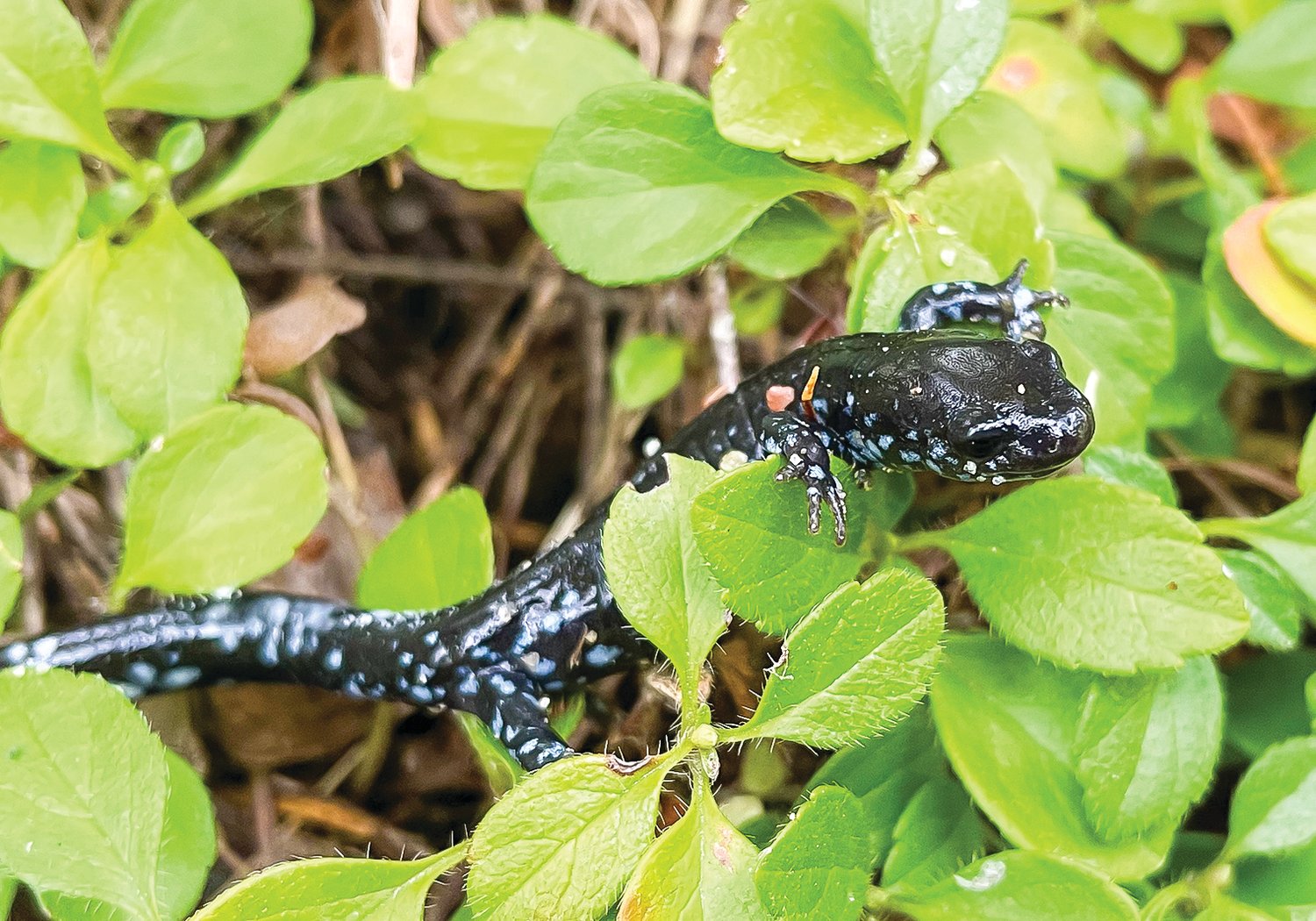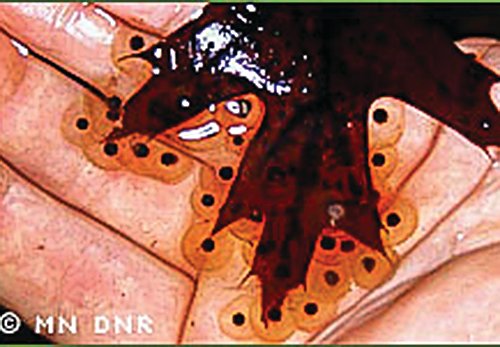Support the Timberjay by making a donation.
Life in the slow lane
Blue-spotted salamanders seem to be on the decline
I was surprised recently on one of our cool late September mornings to find a blue-spotted salamander very slowly making its way across our gravel road. It was moving slowly because the temperature …
This item is available in full to subscribers.
Attention subscribers
To continue reading, you will need to either log in to your subscriber account, or purchase a new subscription.
If you are a current print subscriber, you can set up a free website account and connect your subscription to it by clicking here.
If you are a digital subscriber with an active, online-only subscription then you already have an account here. Just reset your password if you've not yet logged in to your account on this new site.
Otherwise, click here to view your options for subscribing.
Please log in to continue |
Life in the slow lane
Blue-spotted salamanders seem to be on the decline
I was surprised recently on one of our cool late September mornings to find a blue-spotted salamander very slowly making its way across our gravel road. It was moving slowly because the temperature was in the thirties and that puts all cold-blooded creatures in the slow lane of life.
I was surprised because it had actually been years since I’d seen a blue-spotted salamander, which is undoubtedly the most common salamander here in the North Country.
Decades ago, I would run into these small salamanders regularly, usually whenever I was moving firewood. They like to spend their days under logs on the forest floor, so a woodpile on the edge of the woods is a likely home. I still move firewood regularly, but it has been years since I’ve spotted a salamander while doing so.
But starting about fifteen years ago, we moved into a dryer weather regime in the region, with several bouts of extreme drought. While we’ve had some stretches of wet weather as well, for years we failed to catch up with the precipitation shortfalls in the dry years and that meant that the woods here have generally been drier than was typical of thirty, forty years ago. Ephemeral spring forest pools or ponds dried up faster than before and that increases the likelihood that the hatchling salamanders often hadn’t completed their metamorphosis into air-breathing, landlubbers by the time their watery home went dry. While they spend their adult lives on land, salamanders start their lives in the water, using external gills to breathe until they mature to the point where they can start breathing with their lungs. But if the pools where they hatched dry up earlier than usual, they don’t make it to maturity.
This kind of thing happens in nature, and wildlife populations ebb and flow as a result. But if the trends last long enough, due to factors like climate change, the impacts to populations can become long-term. While this very cold-tolerant species, which is widely distributed in northeastern Minnesota into Canada, is still considered common overall, from my own experience, and from that of others I’ve asked, I would say they are certainly less common than in the past.
I suspect factors other than drought are playing a role as well. The spread of non-native nightcrawlers into our region has greatly diminished the amount of forest litter, or duff, and that allows our soils to dry out much faster than in the past. Even as adults, salamanders like to be in contact with wet soil, so drying soil reduces the quality of their habitat.
While salamanders like it moist, they generally avoid standing water as adults, except to lay their relatively large gelatinous eggs, somewhere along the edges of a snowmelt pool or pond. The online nature blogs I checked contend that blue-spotted salamanders lay their eggs in April, but I’m going to amend that to more like May in most years, at least up here. These salamanders aren’t like wood frogs, which can crawl under a few leaves and freeze solid for the winter, only to thaw out and wake up again. They don’t freeze well, so they generally must spend the winter somewhere several feet underground, where they can get below the frost line, and I’m imagining they generally don’t make it back to fresh air until the frost is out of the ground, and we all know that doesn’t happen most years until very late April or May in the North Country.
If you haven’t seen one of these salamanders before, don’t be surprised. While the DNR website refers to them as “medium-sized,” I would definitely call them a small salamander. Four inches long is probably the biggest I’ve ever seen. That, and the fact that they spend most of their lives under rotting logs in the woods, means they’re very easy to overlook.
Unless, like me, you actually keep an eye out for the them.









